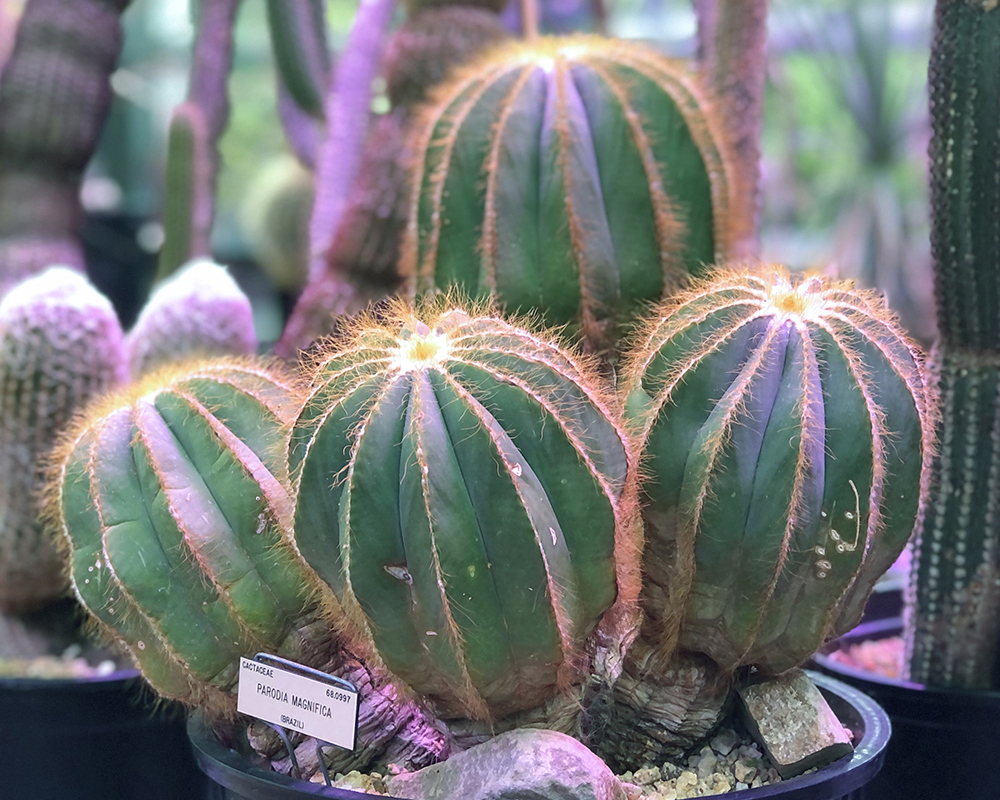
Arid House
The Arid House is home to plants from around the world that have adapted to survive in regions that receive very little rain; these arid regions are called deserts if they receive fewer than 254 mm (10 inches) of rainfall annually. A visit to this collection highlights plants that have evolved many strategies to thrive in harsh, dry environments.
For example, modified shapes like succulent leaves or stems can help store water more efficiently, while spines and thorns act as a deterrent against herbivores and help reduce water loss by creating a microclimate around the plant. Mimicry is another adaptation where plants might resemble rocks or other inanimate objects reducing the risk of being eaten by animals. In addition to its value to researchers globally, this collection offers visitors a glimpse into the resilience of these plants in some of the most challenging conditions on Earth.
History
This plant collection dates back to the 1920s, with most plants grown from seed or cuttings taken on lengthy expeditions. There’s a vast array of unusual, interesting plants in this collection, all adapted to survive in harsh conditions.
Collection Highlights
The Arid House includes over 2,500 plants, 350 of which are endangered species. It contains a substantial number of the Garden’s most biologically and scientifically valuable plants, including many living “type” specimens that represent the first specimen bearing a new scientific name and the one true example of the species. Other accessions belong to species that are now extinct in the wild and are therefore irreplaceable.
Capturing, storing, and conserving water is essential in arid environments, and that’s exactly what succulents do. All cacti are succulents, but not all succulents are cacti. Other examples of succulents include euphorbias, agaves, and aloes. These plants have evolved a variety of ways to survive in extreme heat with little water, such as capturing water with extensive root systems, storing water in their fleshy tissues, and reducing water loss through thick, waxy stems or leaves.
Caring for the Collection
At the Garden, caring for these plants is highly orchestrated through a state-of-the-art computer system that provides independent environmental control to each of the three growing chambers. Heating, cooling, light levels, shade, and air circulation are tailored to each chamber. Fans circulate the air for cooling or heating, while roof vents open and close to moderate the temperature. The shade cloths reduce the heat load in the house and extend over the collection to protect plants from being scorched on sunny days and retract on foggy days. The colored LED lights supplement sunlight, needed to make up for shade cast by the oak trees outside and by the shade cloth overhead. Plants are watered by hand with a recently installed water-processing system that adjusts the pH and injects a low-level fertilizer into the watering system.
Banner photo: African milk barrel (Euphorbia polygona var. striata)



